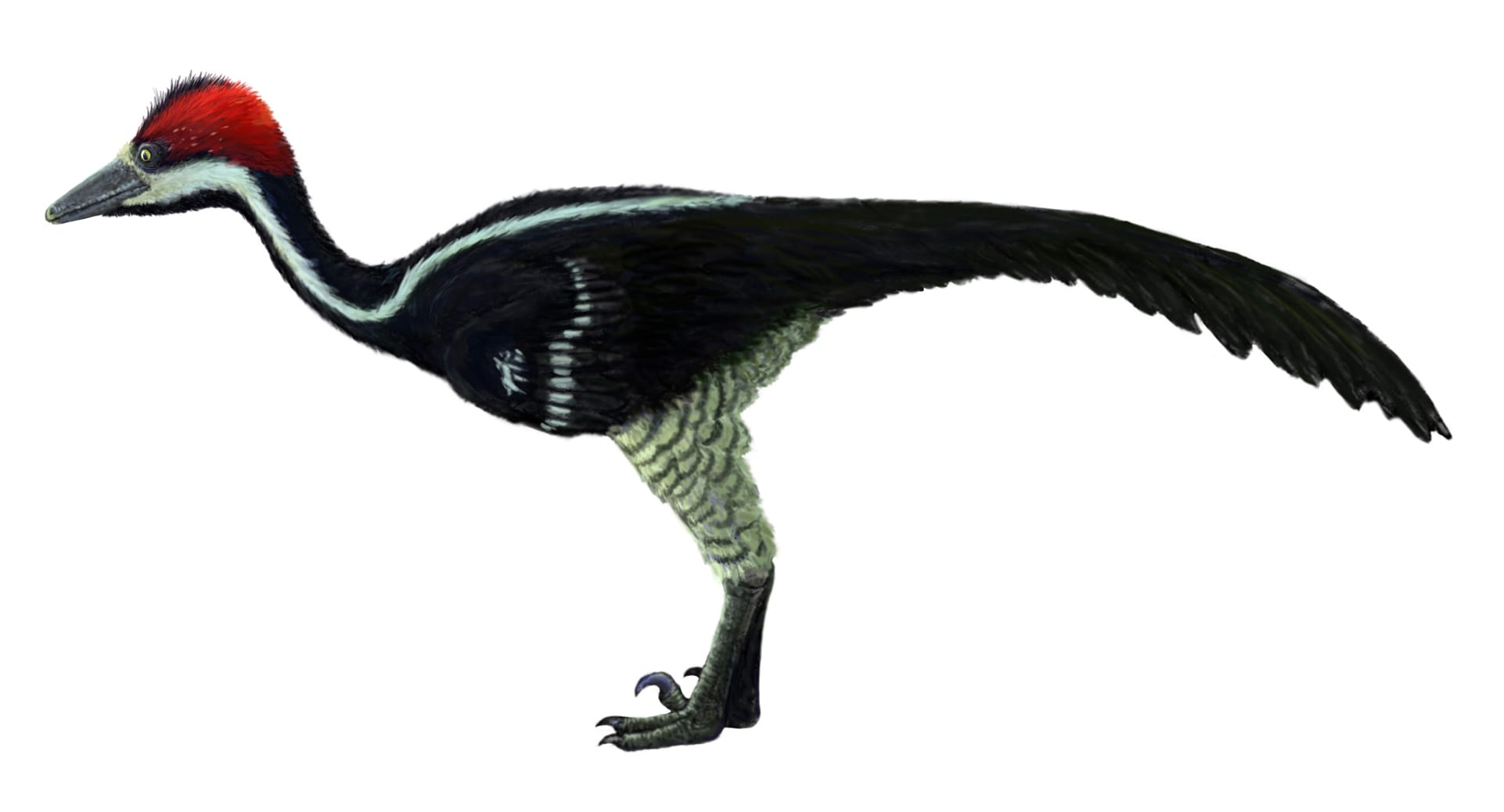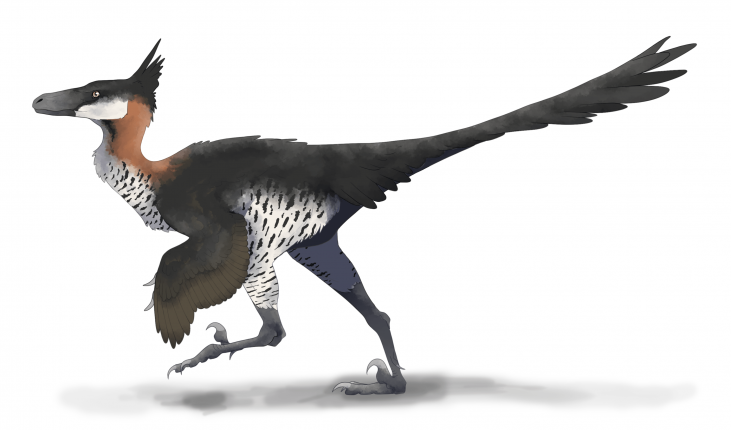
Saurornithoides was a dinosaur about 2 to three and a half meters long and weighing about 35 to 45 kg. Fossils of this dinosaur were found in Mongolia and Tajikistan. Its name means something like "bird-like lizard". It lived during the Upper Cretaceous from about 80.6 to 72 million years ago.
Saurornithoides was a long-legged predator that could run fast on its hind legs and had excellent eyesight and hearing.
This small theropod is a member of the Troodontidae, a group of small bird-like, graceful dinosaurs from the Maniraptora (= "hand predators") group. Its closest relative was probably the North American genus Troodon.
| Profile | Saurornithoides |
|---|---|
| Prehistoric Era | Upper Cretaceous 80.6 to 72 million years ago |
| Order | Saurischia |
| Suborder | Theropoda |
| Family | Troodontidae |
| Tribe | |
| Genus | Saurornithoides |
| Species | Saurornithoides mongoliensis (Osborn, 1924) Saurornithoides junior (Barsbold, 1974) |
| Height | 0.8 meter |
| Length | 2 - 3.5 meter |
| Weight | 35 to 45 kg |
| Territory | Mongolia, Tajikistan |
The first fossils of Saurornithoides were discovered by Chih, a Chinese member of the American Museum of National History Expedition, on July 9, 1923. The area in Mongolia where he found the fossils is known as the Djadokhta Formation.
Saurornithoides had a mean skull length of 189 millimeters.
The size of his skull allows us to draw conclusions about his brain development. He had a very large brain relative to his body size and probably one of the highest encephalization quotients (EQ) of non-birds. It is believed that he had relatively advanced behavioral abilities. In addition, his senses such as hearing and vision were probably very well developed.
Like all troodontids, Saurornithoides had closely spaced teeth in the lower jaw and a large number of sharp teeth.
It had a slender build, possessed sickle claws and prehensile hands.
On its hind legs it had a retractable claw on the second toe of each foot. This claw was oversized and curved similar to that of Velociraptor.
Its eye sockets were large and their position suggests the ability of stereoscopic vision. This enabled him to perceive depth efficiently.
In light, he probably had advantageous vision and his night vision was also excellent.
From this it can be deduced that Saurornithoides preferred a nocturnal lifestyle.
He probably went in search of small mammals and reptiles, his prioritized prey, during the twilight hours. In addition, dinosaur nestlings and eggs were probably also on its menu.

Saurornithoides and other troodontids were excellently developed at birth and probably required little to no parental care.
Based on many bird-like features, scientists believe that Saurornithoides was covered in feathers.
Image source: FunkMonk, CC BY 3.0 https://creativecommons.org/licenses/by/3.0, via Wikimedia Commons
Size comparison: Audrey.m.horn, CC BY-SA 4.0 https://creativecommons.org/licenses/by-sa/4.0, via Wikimedia Commons
Skull: Ryan Somma, CC BY-SA 2.0 https://creativecommons.org/licenses/by-sa/2.0, via Wikimedia Commons
A restoration of Saurornithoides mongoliensis: Audrey.m.horn, CC BY-SA 4.0 https://creativecommons.org/licenses/by-sa/4.0, via Wikimedia Commons